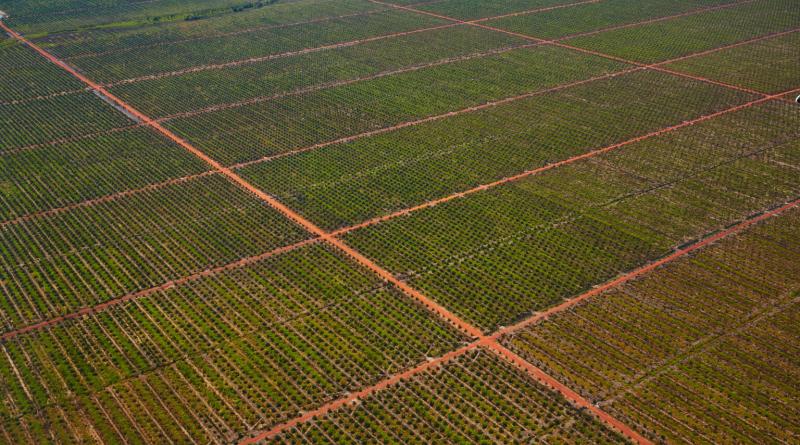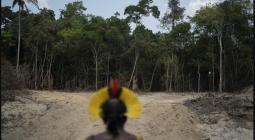Forests Are Worth More Than Their Carbon, a New Paper Argues

Experts say carbon sequestration projects that don’t prioritize biodiversity may be doing more harm than good, including to the climate.
Large-scale tree planting projects aimed at sequestering carbon are oversimplifying the many values of forests, researchers reported Tuesday.
In a peer-reviewed opinion paper published in Trends in Ecology & Evolution, University of Oxford researchers point out that, although carbon sequestration is a valuable tool for climate action, large-scale tree planting projects often lack biodiversity, which can make them ineffective climate mitigations. The authors warn against using carbon as the sole metric for a forest ecosystem’s importance and argue that carbon sequestration projects need to expand their focus to encompass ecosystem restoration and biodiversity conservation.
“I’m not saying that we are against planting trees,” co-author Jesús Aguirre-Gutiérrez, a Ph.D senior researcher at Oxford’s Environmental Change Institute said. “But it’s just one of the things that we should be doing, and these plantations of trees have to have a very strong scientific base.”
Carbon sequestration is a growing global trend in addressing emissions: in 2020, the global carbon capture and sequestration market was valued at $1.96 billion and projected to grow, according to Fortune Business Insights. Monoculture—or single-species—tree plantations are popular and economically valuable vehicles for carbon sequestration because they can provide salable products like timber and palm oil. But reducing a forest’s value to the single metric of carbon overlooks all the other crucial ecosystem functions performed by biodiverse forest environments.
Aguirre-Gutiérrez studies the functionality of forests, and the most prominent trend he’s seen in recent years is the proliferation of monoculture plantations across tropical forest areas in Africa and the Americas, he said.
The paper draws on literature from the past several years, cautioning against an oversimplified approach to carbon sequestration and tree planting projects.
The values of non-carbon ecosystem functions are less quantified and require greater attention from tree-planting organizations and policy makers, the paper’s authors write. There’s a financial incentive to focus on carbon, but the paper’s authors argue that focus should shift from carbon sequestration to include conservation and restoration of intact forest ecosystems. This—though less financially incentivized—would aid in climate mitigation and adaptation while also prioritizing biodiversity and functional ecosystems.
Aguirre-Gutiérrez, who works in countries including Mexico, Brazil, Peru, Ghana, Gabon, Malaysia and Australia, listed clean water, climate buffering and pollination as some of the crucial services offered by intact tropical ecosystems and often lost in monoculture projects. In environments like savannas or grasslands, increased forestation can get in the way of long-standing relationships between land and wildlife, drought and fire patterns, water access and more.
Scott Denning, an atmospheric science professor at Colorado State University who wasn’t involved in the paper, said its conclusions are well understood in the field of forest ecology, but haven’t yet successfully proliferated the public consciousness. There’s a widespread misunderstanding of carbon sequestration projects and their potential to combat climate change, he said.
“The idea that we’re going to offset a large fraction of fossil fuel emissions by just planting trees in a giant industrial way across the world seems misguided,” Denning said.
Citing research from 2019, Aguierre-Gutierrez and co-authors Nicola Stevens and Erika Berenguer note that the amount of viable space to plant trees is limited, and even if all tropical land area was completely covered in single-tree plantations, it would only sequester the equivalent of 1.7 years of global emissions.
Although carbon sequestration, if done thoughtfully and effectively, can be beneficial in terms of offsetting a small portion of the greenhouse gases humans have added to the atmosphere, it’s no replacement for reducing emissions, Denning said.
“These alternate or fantasy things that we dream up to vacuum up CO2, we should think of them as desperate last resorts, not the go-to solutions,” Denning said.
Yet tree-planting has grown into a global industry: a 2021 paper from Yale University researchers found that the number of organizations involved in tree planting projects has increased by 288 percent over the past three decades, with particular growth in for-profit organizations and a range of focuses on tree planting for fruit or nut crops, timber production, reforestation and more. The study also found an overwhelming lack of monitoring in these projects, and very little tracking of tree survival.
Some tree-planting projects are funded by carbon offset programs that promise to balance out emissions in one part of the world—often the global north—by planting trees and creating carbon sinks in the global south. The climate payoff of carbon offset projects in general is seen by many as dubious at best, but the Oxford University researchers point out another problem. Even when these sequestration projects are capturing carbon, that’s only one aspect of mitigating the impacts of climate change. Aguirre-Gutiérrez pointed out that these plantations can lower the functionality of the forest ecosystems where they reside. The impacts of a monoculture forest on the surrounding ecosystem can pose a real risk to local communities and wild ecosystems that rely on biodiversity for survival.
There’s a deep historical precedent for the reductive commodification of forest resources. Arun Agrawal, a Ph.D political scientist from the University of Michigan who studies community-based conservation, pointed out that oversimplifying forest value to carbon is an extension of this history.
“Forests do many things, so to focus on any single metric is really to replicate how colonial governments saw forests, which is just as a source of timber,” Agrawal said.
It’s been well documented that indigenous communities are most effective at protecting biodiversity and ecosystem success in forests, and Agrawal added that in addition to ecological benefits, intact forests also sustain many communities’ livelihoods.
The paper’s authors point out a lack of regulation in the global carbon market and argue that tree planting projects need to take a more holistic approach to their impacts on natural environments, centering conservation and restoration of functioning ecosystems. And ultimately, no matter how appealing sequestration or offsetting sounds, there’s no replacement for ending society’s reliance on fossil fuels.
“The really important thing that we have to do is stop setting carbon on fire,” Denning said. “And virtually all of that is coal, oil and gas.”





